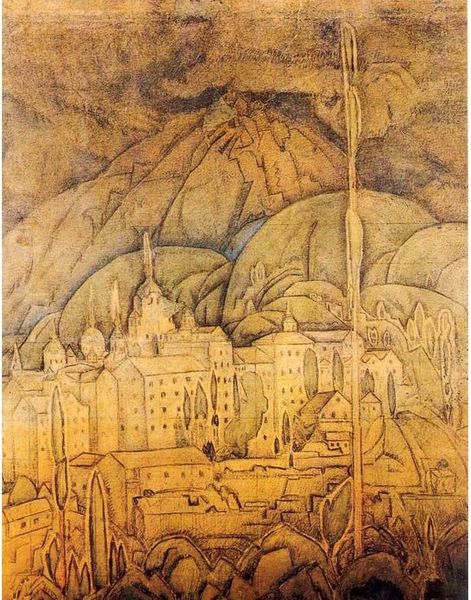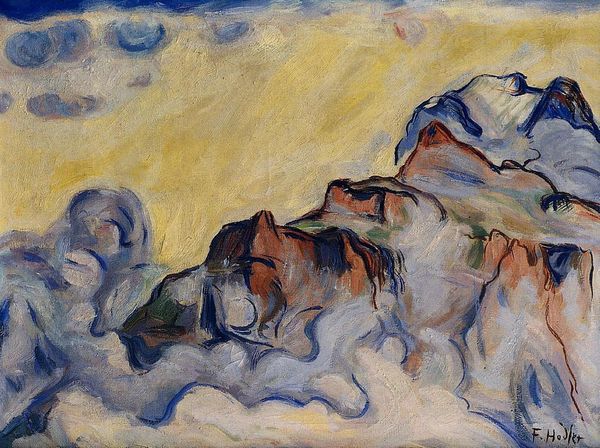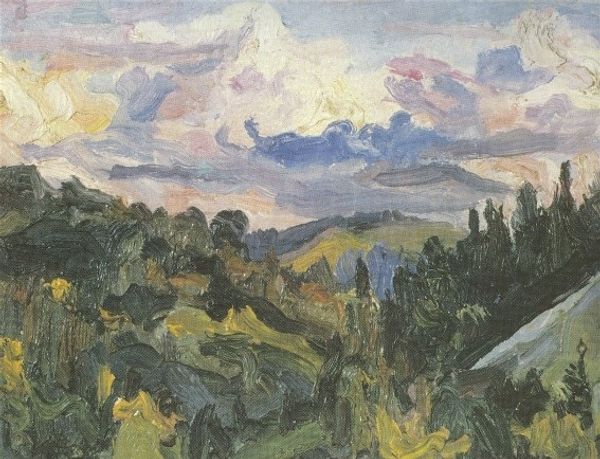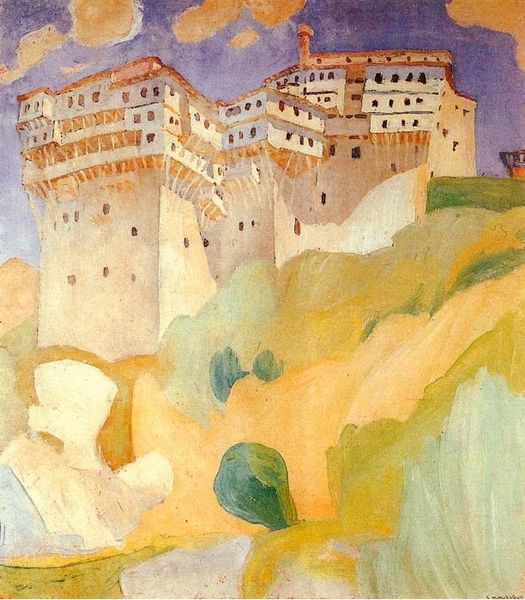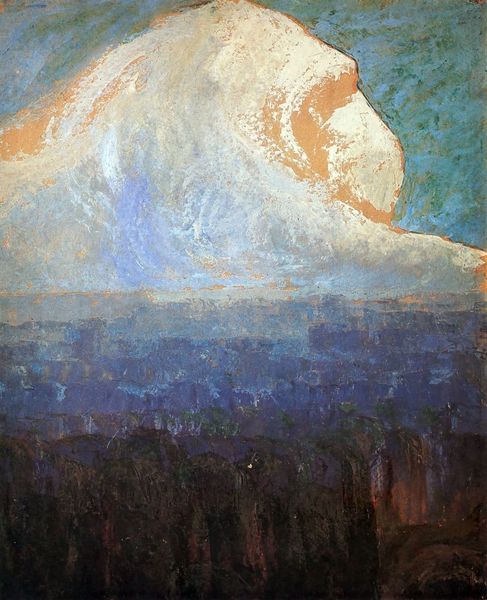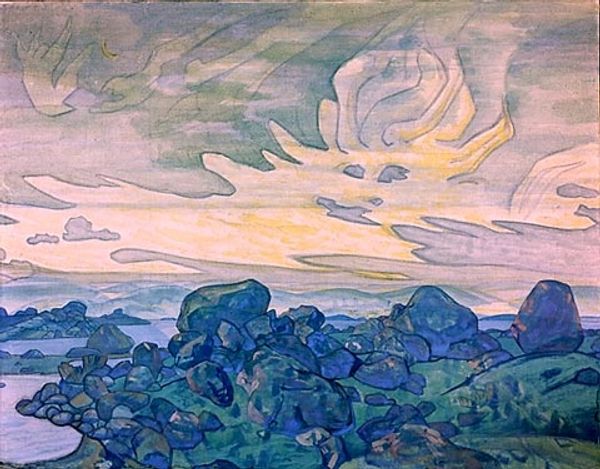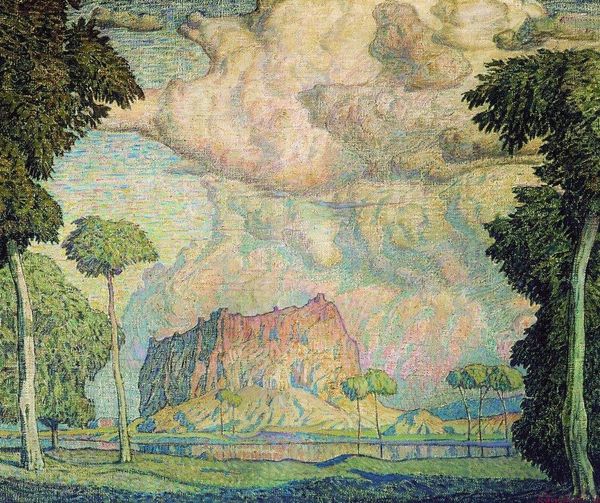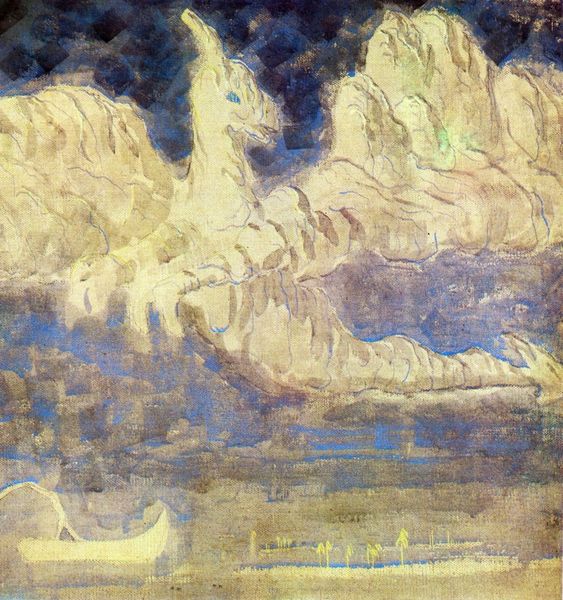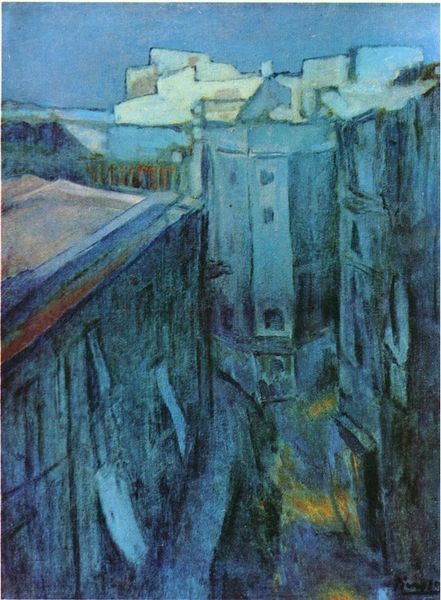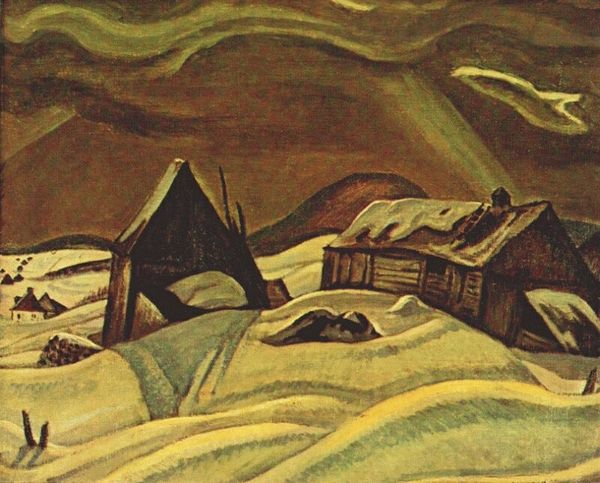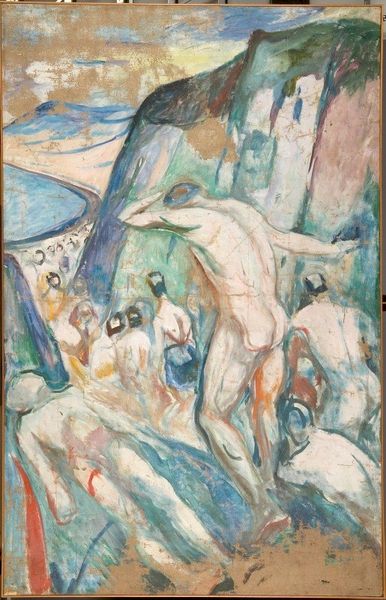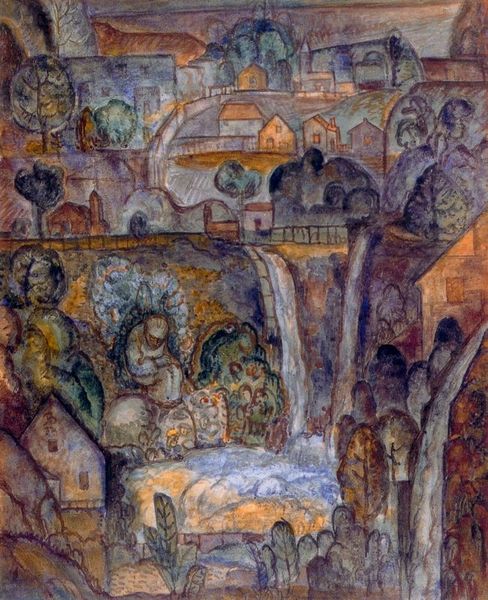
watercolor
#
abstract painting
#
greek-and-roman-art
#
landscape
#
impressionist landscape
#
watercolor
#
abstraction
#
cityscape
#
early-renaissance
#
watercolor
Copyright: Spyros Papaloukas,Fair Use
Curator: Spyros Papaloukas painted "Skete of Agios Andreas" in 1924. It's primarily watercolor, with some lovely details. Editor: My first thought is serenity. The color palette is so muted, almost monochromatic, but it evokes a peaceful atmosphere, like looking at something through mist. Curator: The buildings are fascinating, aren’t they? See how the architectural forms seem to emerge from the landscape itself? I sense an interesting continuity between human construction and the natural world, which often symbolizes our yearning for the eternal. Editor: Definitely. And it is made in watercolor, a medium so reliant on its base – paper. Did he choose it because it lends itself to the ethereality that seems to hang over the entire composition? It doesn’t obscure the material basis the way oils might. Curator: Precisely. The very name 'Skete,' referring to a monastic community, conjures a history rich with spiritual symbolism, places set apart from the material concerns of the world. That lightness reinforces this sense of escape, this attempt to portray spiritual transcendence through material form. Editor: The repetition of geometric forms – those simplified houses, the rounded hills – it gives me a sense of ordered labor. Even in such a supposedly spiritual location, there are underlying structures of power and resource management. How else could one survive, reflect, and pray, without sustenance? Curator: I see your point. And perhaps, looking at it again, the lack of vivid color could also be interpreted as a commentary on the austerity of monastic life, the deliberate stripping away of worldly pleasures in pursuit of spiritual purity. Editor: Though the almost naive execution is striking as well. Watercolors have to be quick. Was it done on the spot, as a spontaneous act of devotion or reportage? That quickness adds a compelling layer. Curator: Indeed. It's an intriguing fusion of visual perception and cultural memory—the image becomes a conduit to a tradition. Editor: It reminds me that the value lies in that tension – the artist trying to grasp the eternal within a medium rooted so thoroughly in the here and now. A balance to find and honor.
Comments
No comments
Be the first to comment and join the conversation on the ultimate creative platform.

